Iriomote’s Endangered Wildcats
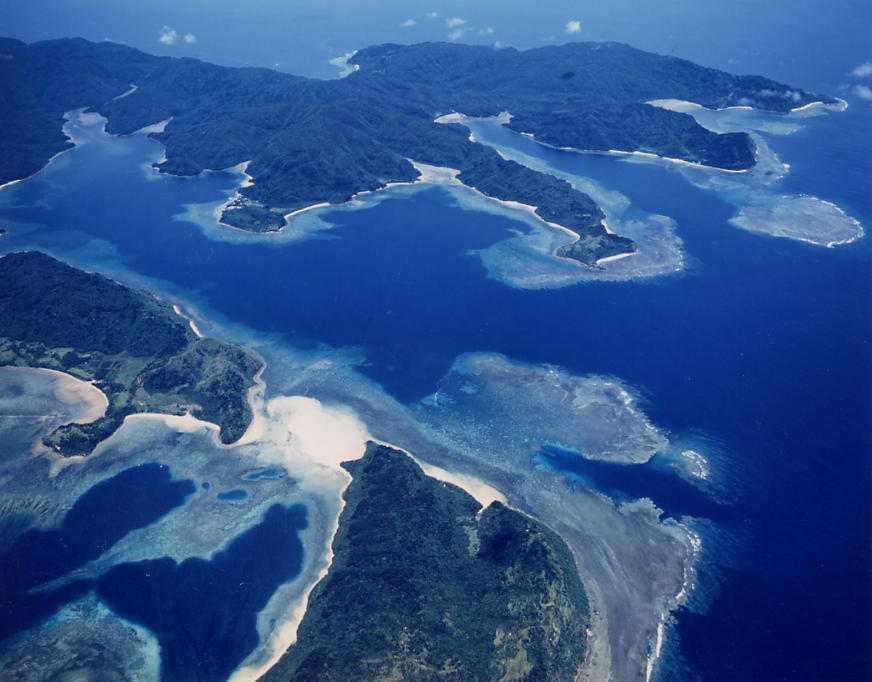
Making international travel plans these days is complicated—if not impossible—but if you want to go somewhere that feels foreign without leaving Japan, Okinawa’s Iriomote Island, with its lush rainforests, makes for an unforgettable eco tourism destination. It’s here that you can hike through the jungle with a chance to run into Iriomote’s critically endangered wildcats.
Iriomote is a 289-square-kilometer island that lies to the west of Ishigaki. It’s home to 2,400 residents and is 90% rainforest. It remained largely untouched until the end of World War II as it was a hotbed of malaria (it has since been eradicated) and often lies in the path of typhoons. Today it is part of Iriomote-Ishigaki National Park, Japan’s southernmost national park known for manta ray diving, vast mangrove forests and tropical beaches.
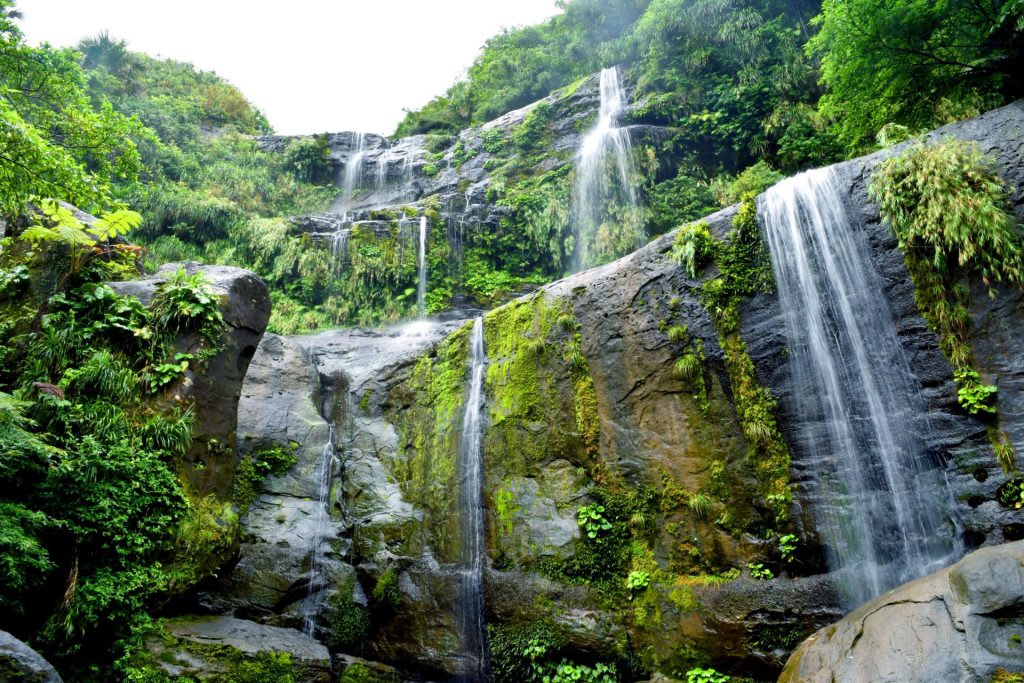
Iriomote is also the only place in the world where you can find the Iriomote yamaneko (mountain cat), a wild cat endemic to the island. This cat is a subspecies of the leopard, but no larger than a domestic cat. It is characterized by white spots behind its round ears, white fur around its eyes, a large flat nose and a fat tail.
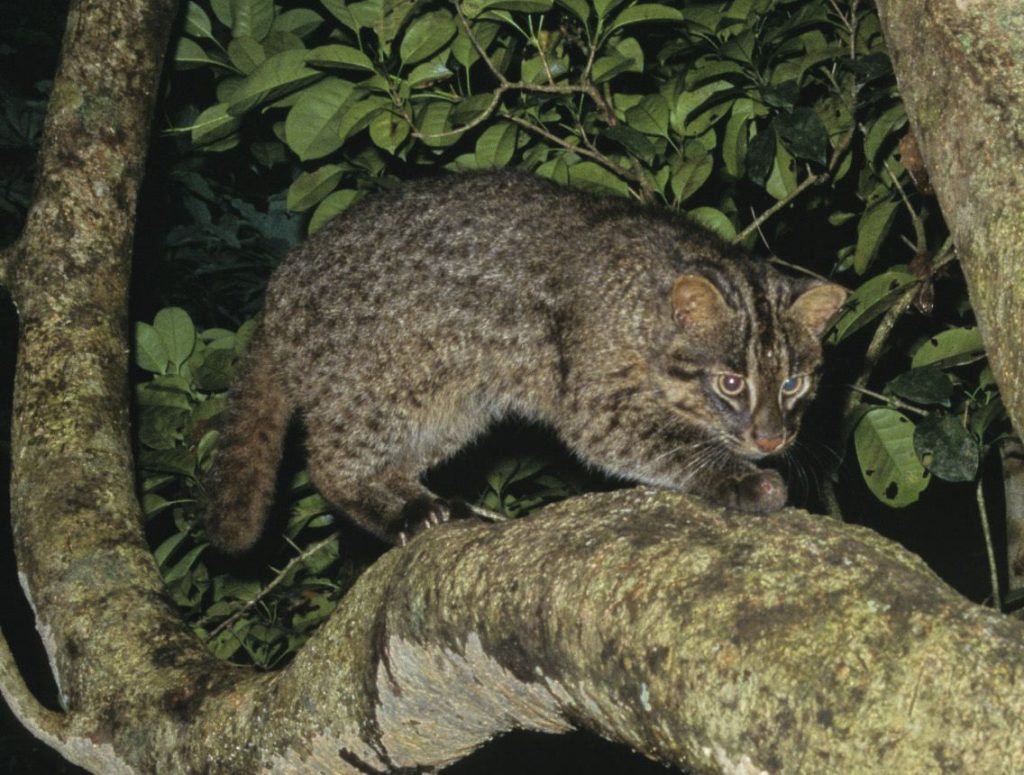
It’s said that the land was originally separated from the Eurasian Continent and with it came the cats. Since this carnivorous cat has spent 90,000 years in isolation without other small mammals, it evolved to feed on a wide variety of creatures such as lizards, snakes, frogs, crickets, fruit bats, birds and freshwater prawns. Feeding on a diverse range of prey is a unique characteristic only seen in Iriomote cats.
The yamaneko was academically recognized in 1965 by an ecologist named Yukio Togawa who followed rumors of a wildcat in Iriomote.
“After discovering the wildcats, two of them were kept for research purposes at our house for around two-and-a-half years at the request of the Japanese government,” remembers Kumi Togawa, Yukio’s daughter. “I was a child then, but I remember they were very wild and completely different from domestic cats. They always hissed at me when I approached them. They also had a “wild” odor, the kind that you smell at the zoo. When my father brought them food, they warmed up to him, and so he and his trusted assistant became the only ones who could take care of them.”
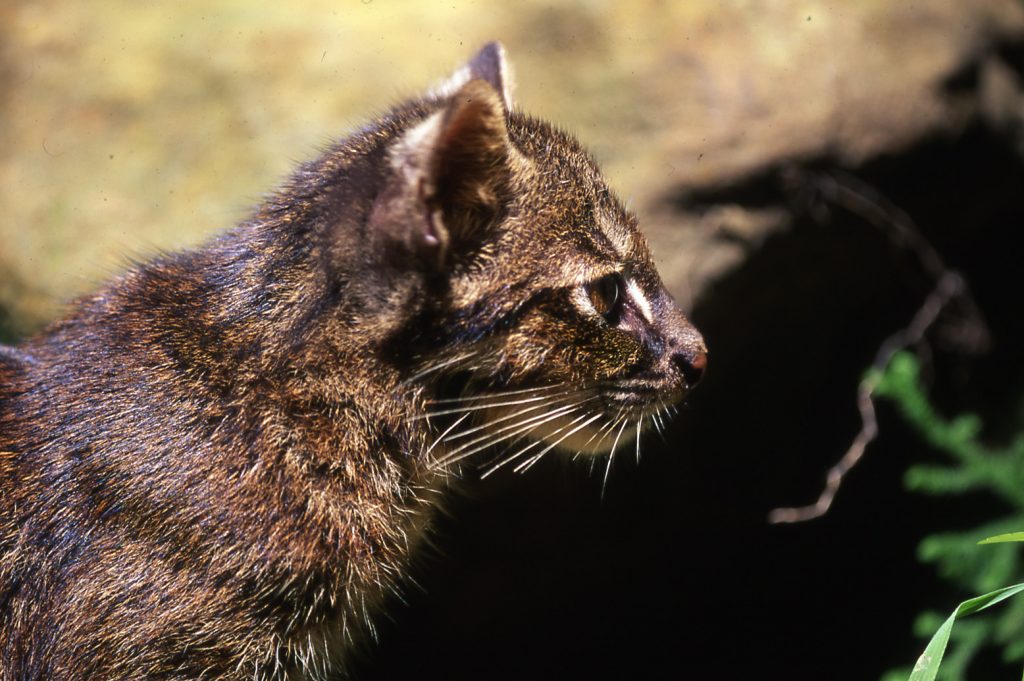
Scientists the world over were thrilled about this new discovery—the fact that a wild cat could inhabit such a small island was a miracle in itself—and various steps were made to relocate residents to preserve space for this cat. Naturally, the locals held mixed feelings: pride over their island and resentment at the wildcat being prioritized over their livelihood. Thankfully they were able to reach a happy medium as researchers found that wildcats and locals could peacefully coexist.
Today most development is on the eastern coast of the island. There are two main villages: Ohara and Uehara, which are connected by one road. Other coastal villages can only be reached by boat. While there is just one major road on Iriomote, in recent years the growing traffic from resort development has resulted in unsuspecting cats being hit by vehicles, while careless agriculture practices have destroyed habitat, which has impacted their feeding and breeding grounds.
The wildcat has been on the International Union for Conservation of Nature Red List of Threatened Species since 2008 and there are currently only 100 to 150 cats left on the island. Contrary to the domestic cat, yamaneko only live seven to eight years in the wild and give birth annually to only one or two kittens at a time. They are mostly nocturnal and especially active at dawn and sunset.
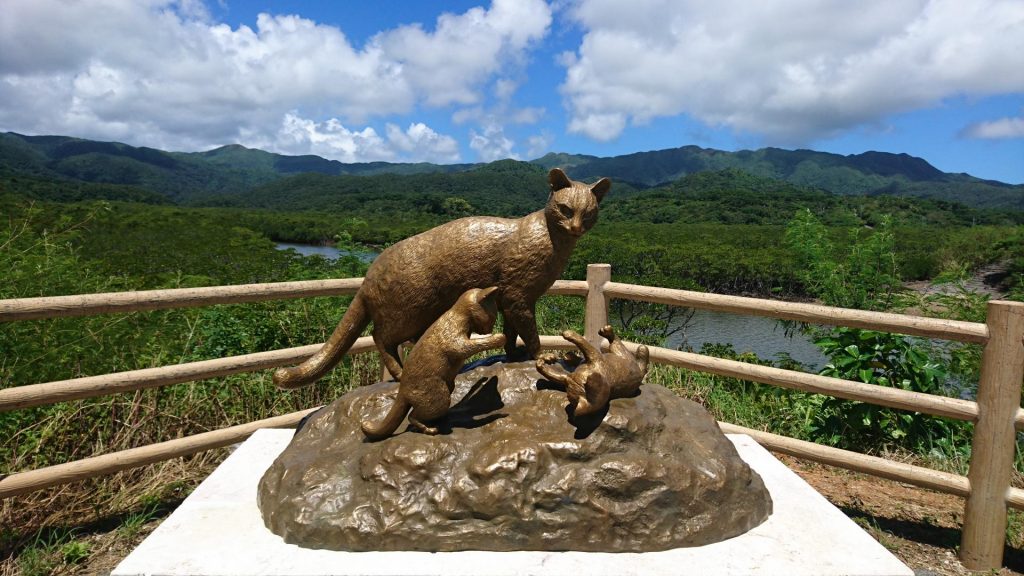
Iriomote, along with Amami Oshima, Tokunoshima and the Yanbaru Region in Okinawa mainland, is expected to become Japan’s newest UNESCO World Natural Heritage Site in the summer of 2021. It’s predicted that visitors will double to a worrying 700,000 within three years. As it stands, more travelers visit Iriomote annually than other World Natural Heritage Sites across Japan—more than even Ecuador’s Galapagos Islands.
Non-profit organizations such as the Japan Tiger and Elephant Fund (JTEF) started by Kumi Togawa are taking measures to protect the wildcat.
“All living things are constantly evolving, so we should not stop that process,” says Togawa. “The species JTEF works on conserving are all endangered, and I want them to stay on this planet forever. Conserving them means conserving our planet.
Initially we started this NPO to protect tigers and elephants in India. In 2019, we included Iriomote wildcats to this list as I wanted to fulfill my father’s wishes that Iriomote’s rich nature and its many creatures, including the wildcats, would remain safely.”
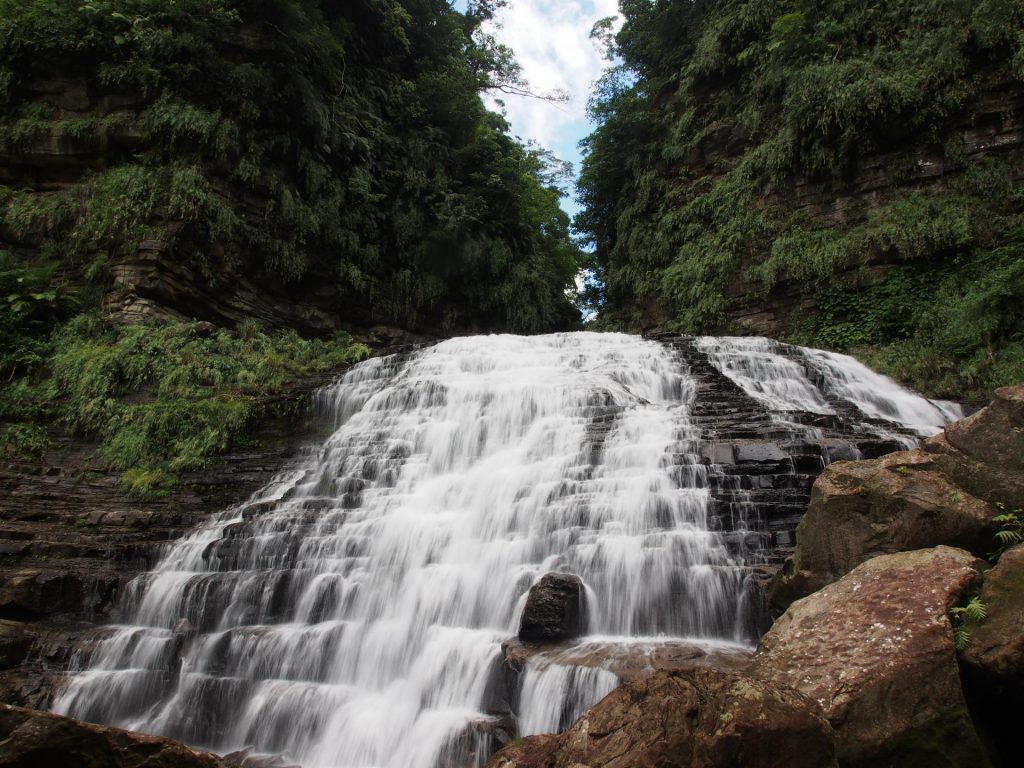
JTEF’s Roadkill Prevention Program conducts a night patrol of the main road every evening to remind drivers to slow down.
“Every year the number of wildcats getting hit by car increases. Our team of around 20 volunteers work to remove small frogs and birds on the road that have been run over, so that they don’t attract wildcats to the roads,” says Yusuke Takayama, who is based in Iriomote. “We also analyze traffic data and regulate speed limits. We use this data to conduct environmental and educational workshops with local schools so that we can all work together to create a safer environment for the cats.”
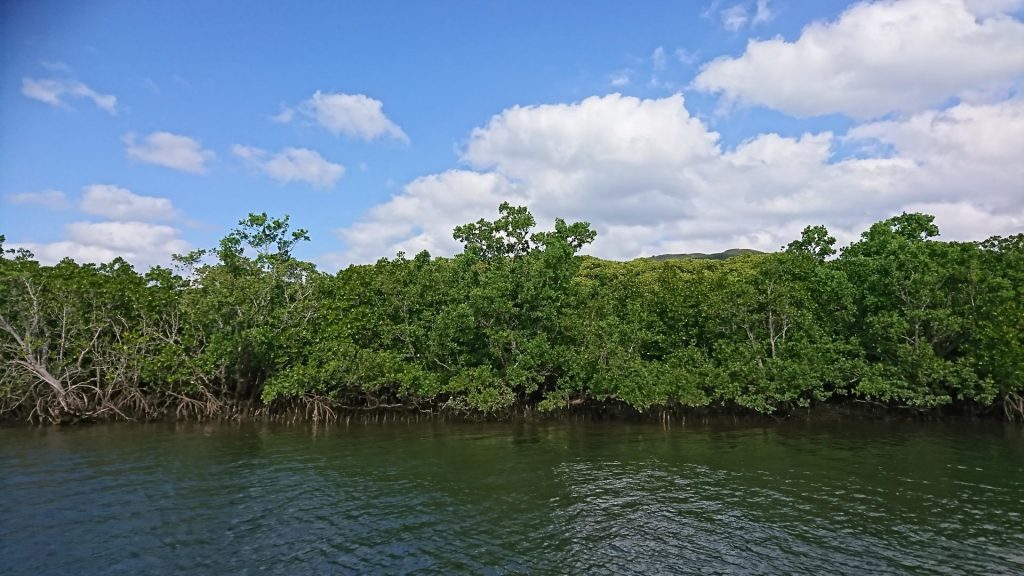
Additionally, they assess the impact of development projects and take on an advisory role to regulate the number of visitors entering the island.
Us 4 Iriomote spearheaded by footwear company Keen is another organization that works on educating travelers on visiting Iriomote responsibly and partnering with local environmental awareness programs. They also started the Yamaneko 530 Art project to encourage travelers to pick up plastic trash they find and put it in a special designated box. This summer, they will be releasing “Us 4 Iriomote: the Movie,” a documentary directed by Choji Nakahodo, who is from the neighboring Ishigaki Island. The Ishigaki-born-and-raised photographer grew up surrounded by nature. He developed a passion for nature photography while working in tourism photography in his 20s on Okinawa’s main island. Watch the trailer here.
“This film is about how nature, tradition and culture influence everyday life in Iriomote,” says Nakahodo. “I hope it evokes a sense of wonder in the people who watch it, and that they too will want to experience Iriomote for themselves.”
The movie will be released in July 2021 and available to view here.
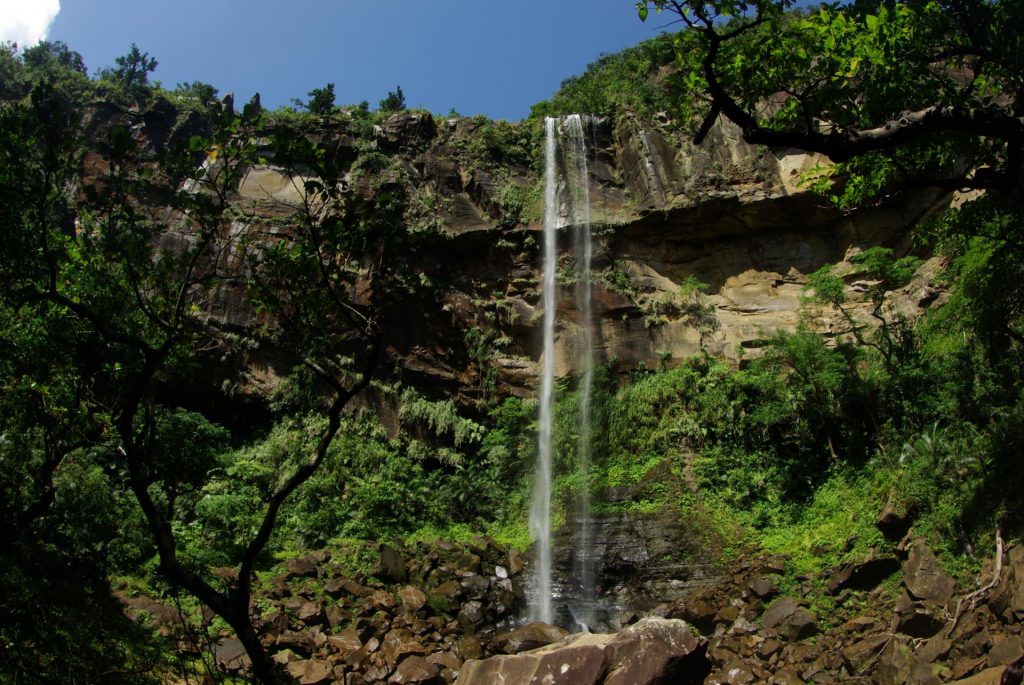
How You Can Help
- Drive slowly if you choose to rent a car.
- Stay on designated tracks when hiking and exploring the forest.
- When hiking avoid strong flashlights unless it is absolutely necessary.
- Do not attempt to feed or set up feeding traps for animals.
- Do not bring in alien species or release pets as they will become an invasive species. Escaped goats have become a pest in the past few years.
- Do not remove or take nature and rare species home.
- Do not move creatures from the location you find them.
- Travel responsibly. Be respectful of the locals, nature and don’t litter.
Iriomote Wildlife Conservation Center
This informative center primarily focuses on conservation of the yamaneko, complete with a taxidermy mount and skeleton specimens. Displays explain environmental protection efforts and exhibits on Iriomote’s natural history and ecosystems. Admission is free.

Getting There
The best way to get to Iriomote is by flying into Painushima Ishigaki Airport on the neighboring Ishigaki Island. Most travelers combine a trip to both of these islands, or base themselves out of Ishigaki and take day or short multi-day trips to Iriomote and the other surrounding islands.
There are two ports on Iriomote: Uehara to the north (40 minutes from Ishigaki) and Ohara to the south (35 minutes from Ishigaki). Ferries are approximately ¥3,500 round trip per person.
Check out what to do in Irimote here.
Related Stories
- Paddling Japan’s Last Frontier
- Manta Madness in Okinawa Dreamland
- Japan’s Top 10 Dives
- Drive and Dive Okinawa
- Okinawa: Cycling Japan’s Far Southwest
Iriomote’s Endangered Wildcats




